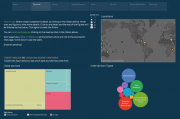NESP TWQ Round 4 - Project 4.3 - Best practice coral restoration for the Great Barrier Reef
As coral cover in the Great Barrier Reef (GBR) continues to degrade, pressure is growing for direct interventions to assist the recovery of corals at important sites. A range of coral restoration and assisted recovery techniques have been trialled overseas and in Australia, however there has not been an evaluation of what will work best in GBR conditions.
This project will:
- Summarise and evaluate the success of coral restoration and assisted recovery techniques worldwide and identify the techniques most likely to help the GBR.
- Experimentally test the most promising techniques.
- Come up with best practices for post-impact coral reattachment and reorientation.
- Explore options for training courses, offset models and Indigenous employment.
Images
Datasets
As coral cover in the Great Barrier Reef (GBR) continues to degrade, pressure is growing for direct interventions to assist the recovery of corals at important sites. A range of coral restoration and assisted recovery techniques have been trialled overseas and in Australia, however there has not been an evaluation of what will work best in GBR conditions. This project will:

This dataset consists of monitoring data from macroalgae removal and larval seeding experiments in Florence and Arthur Bay at Magnetic Island, Queensland, Australia, collected between 2018-2020. There were twelve 5x5m permanent plots in each bay; three with macroalgae removal only, three with larval seeding only, three with macroalgae removal and larval seeding and three control plots. These data include:
- Stationary point count fish survey data
- Photo quadrats
- Coral recruitment to settlement tiles

This dataset consists of a review of case studies and descriptions of coral restoration methods from four sources:
1) the primary literature (i.e. published peer-reviewed scientific literature),
2) grey literature (e.g. scientific reports and technical summaries from experts in the field),
3) online descriptions (e.g. blogs and online videos describing projects), and
4) an online survey targeting restoration practitioners (doi:10.5061/dryad.p6r3816).





